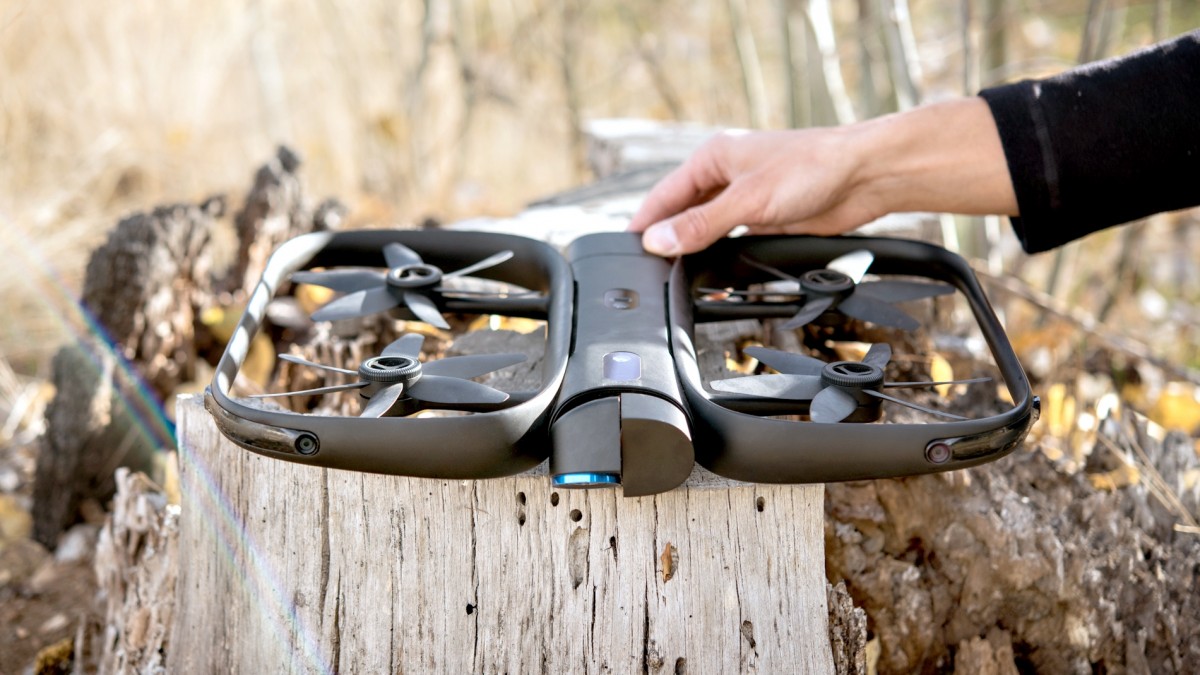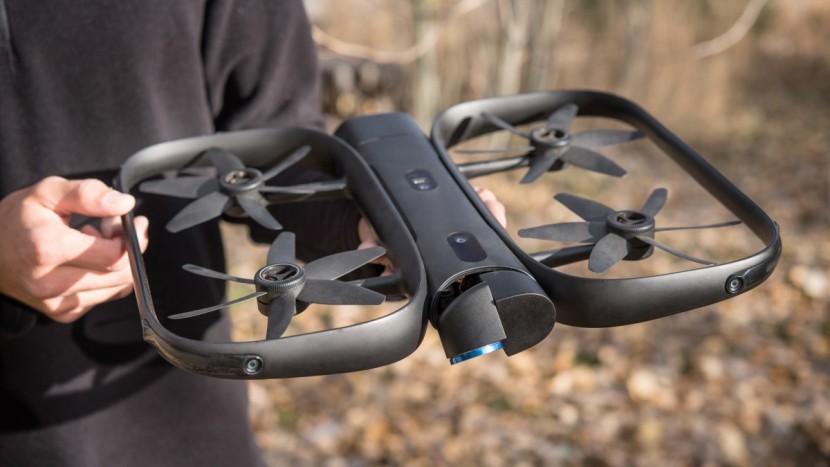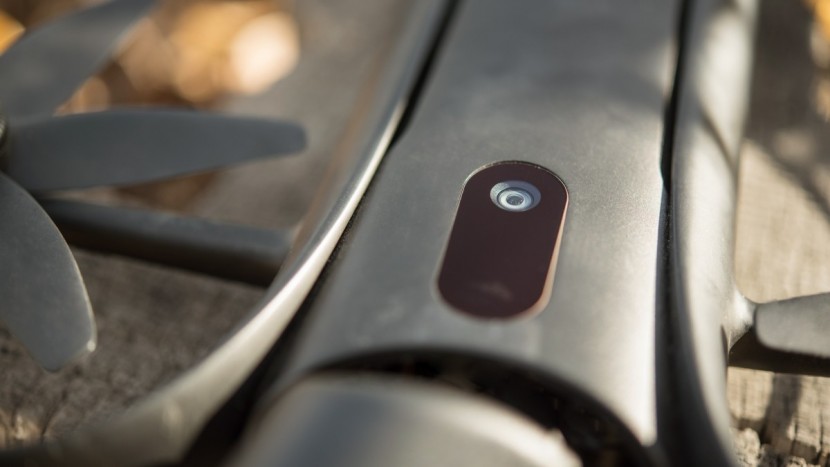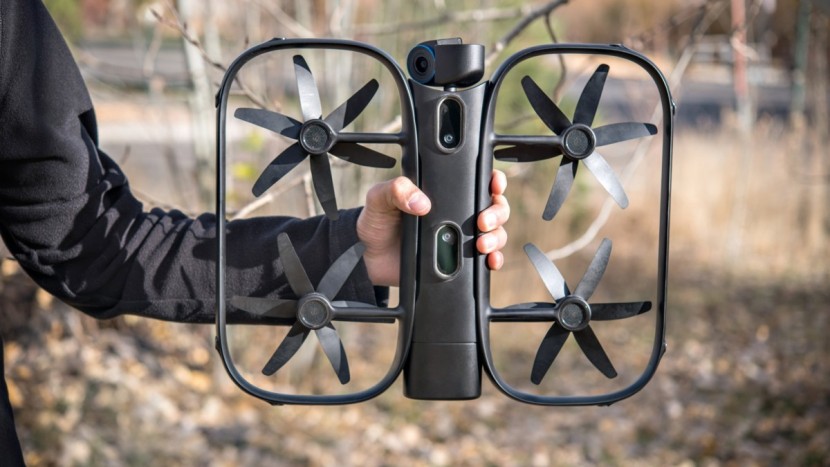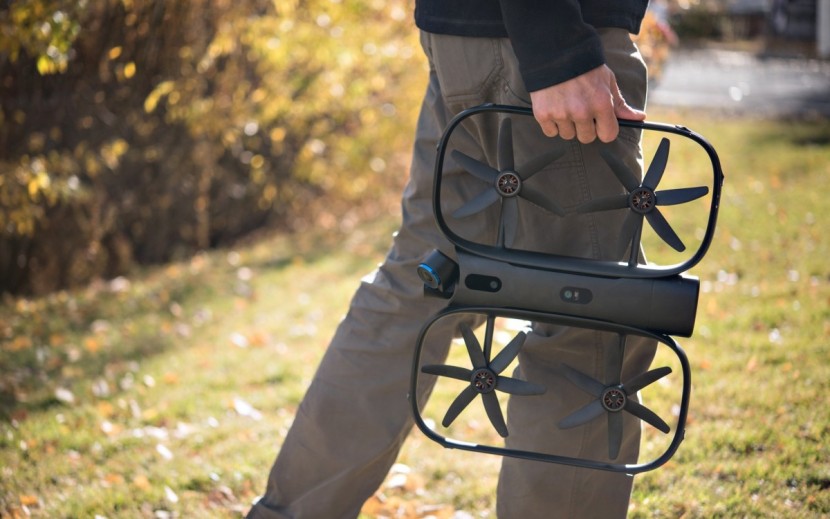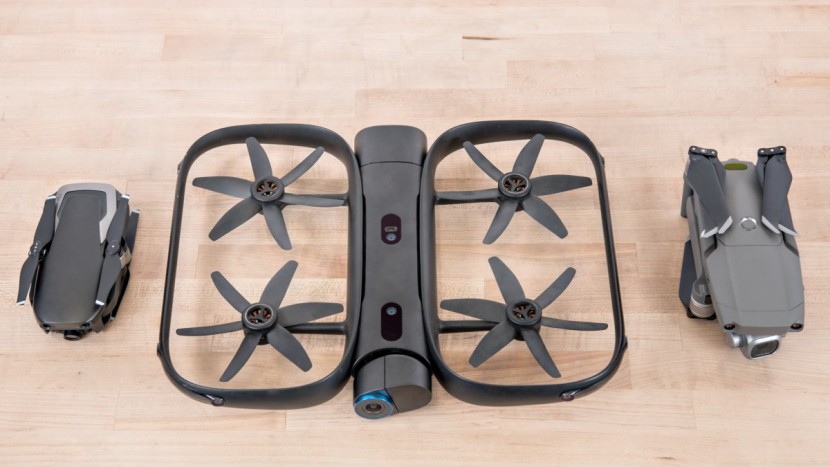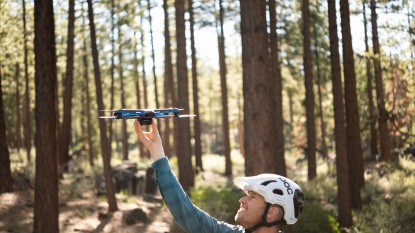Skydio R1 Review
Our Verdict
Our Analysis and Test Results
If you're looking for a drone that can follow you while you're skiing, mountain biking, or running, and can get some great shots without the use of a dedicated drone operator, this is definitely the product for you. However, that is where the Skydio R1's abilities start and end. If you're looking for a more versatile filmmaking tool, there are multiple better ways to spend your money.
The Skydio R1 is a bit of a specialized niche product. Thus it ended up with a fairly mediocre score in our testing, as our tests evaluate the broad range of applications for consumer drones.
Video Quality
The Skydio's camera produces a decent image, but it certainly isn't as advanced as many of the cameras that are cropping up on new consumer drones. That led to a middle-of-the-road score in our video quality testing.
Overall, we think the Skydio's footage looks good. In favorable lighting conditions, it produces pretty good detail and a bright, pleasing color profile. The 4K resolution results in a very clear picture that can be cropped without losing too much quality. However, the relatively small sensor does start to struggle a bit when the clouds roll in. When filming without bright sun we found that the Skydio quickly loses some color vibrancy, making the picture look a bit flat. The footage still doesn't look bad (a pro could probably still pull out some good color in post-processing), but certainly lacks some of the pop you can get from the likes of the Mavic 2 Pro or even the Mavic Air when shooting in similarly cloudy conditions. Compared to the DJI lineup, we would say the Skydio's color quality and accuracy is about even to the of the DJI Spark, though the 4K resolution does bring some more clarity than the Spark can produce.
The Autonomous Follow Feature: A Cinematic Perspective
When most people ask about the Skydio, the first thing they want to know is how good is the autonomous follow feature is in terms of creating a well-framed shot. Well, right off the bat we'd like to make it clear that the Skydio can't hold a candle to having an experienced drone pilot actually fly a drone behind you. First off, the Skydio can't make quick artistic decisions, like letting the subject float to the bottom of the shot in order to get a more dramatic framing of the horizon.
That being said, the Skydio's autonomous follow function does result in some impressively framed shots in general. In ideal conditions (think an open field with no obstacles), the Skydio's footage looks very similar to what you'd get if you asked an experienced drone pilot to follow you at a consistent distance and keep you locked in the center of the frame. As you add obstacles the footage does get a little choppier as the drone identifies those obstacles, often slowing to avoid them and then speeding up once clearing them. If you venture into a forest the Skydio's footage may get a bit wandering and unfocused. However, we never experienced the Skydio actually letting the subject get out of frame unless we took it into obstacles so dense that its failsafe triggered and it just found a safe place to land. We were even able to get decently framed footage from the Skydio in situations where we'd be very reluctant to actually fly a drone ourselves. This is in a whole different league than the autonomous follow functions present on DJI's drones, which often balk a the first sight of a tree.
Flight Performance
The Skydio's incredible autonomous flight abilities are, to a large extent, balanced out by the lack of a physical controller and a short range of just 300 feet. This earned it a fairly average score in our flight performance testing.
First the good: the Skydio's 13 obstacle avoidance sensors make it the best autonomous flying consumer drone by leaps and bounds. It is able to lock into a subject and follow it through terrain where we'd be scared to pilot a drone, avoiding all obstacles in its path. In our testing we were incredibly impressed when it consistently identified skinny pine branches and adjusted its altitude to avoid them. And, if you do happen to get into somewhere too dense for the Skydio to follow, it simply stops flying, scans for a safe place to land, and settles down. After spending some time with this drone, we feel like it would be very hard to actually get it to crash. For comparison, we had the Skydio autonomously follow a subject along a trail with 7 trees on it, and it didn't bat an eye. On the same section of trail the Mavic 2 Pro's autonomous follow function nearly had it crash into tree #2, before fluttering around like a confused chickadee trying to find the subject again.
On top of being able to autonomously follow a subject from the front, back, or side, the Skydio can also take an orbit shot (continuously fly circles around a moving or stationary subject) and act as a tripod (hover in place while keeping the camera trained on a moving subject). We found all of these functions to work exceptionally well in our testing.
Outside of Autonomous Flight What Can it Do?
The answer to this question, unfortunately, is not much. The Skydio does not have a physical controller. Instead, you have to fly it with virtual joysticks on your smartphone's touchscreen. This style of flight lacks any tactile feedback, making it very difficult to perform any precise maneuvers. Also, since your phone is essentially using a WiFi network to communicate with the drone, you can only fly it 300 feet away from your phone. This is incredibly limiting if you want to get above the trees for a dramatic landscape shot, or get an overhead establishing shot of a large area. In this capacity event the DJI Spark and controller package does a better job, and the DJI Mavic Air is light years ahead.
Speed
The Skydio tops out at 25 mph. This is much slower than most of the DJI models, most of which can break 40 mph in sports mode. Also, the Skydio doesn't get anywhere near that speed when it actually has to identify and avoid obstacles. If you want it to follow you on a treeless ski run it will usually keep up, unless you're charging really hard. If you're downhill mountain biking in trees, there is a decent chance you'll leave the Skydio in the dust.
Battery Life
The Skydio's maximum flight time of 16 minutes is about even with that of the tiny DJI Spark, but generally lags behind most other consumer drones. For example, the super portable Mavi Air can fly 21 minutes, and both Mavic Pro models top out at 31 minutes. The Skydio does come with 2 batteries for those that want to fly longer, but you'll obviously have to stop what you're doing and land the drone to change them.
Portability
This is one area where the Skydio isn't exactly a standout. at 2.5 pounds with a single battery, this drone certainly doesn't feel heavy when carrying it around. However, the wide footprint of the drone, and its inability to fold up at all make it a bit cumbersome to take along with you. For skiing and biking ventures, the only real option is to lash it to the outside of a pack. This works, but we inevitably ended up dinging the side of the drone on braches and rocks. Compare all this to the sub-pound Mavic Air that folds up smaller than a 1-liter water bottle, and carrying the Skydio starts to feel pretty cumbersome. We're hoping the next iteration will be foldable.
Ease of Use
The Skydio is incredibly easy to use. We found getting everything set up and the drone talking to the smartphone app to be very intuitive. From there you can take off just by swiping up on your phone screen. The camera then automatically recognizes people and/or cars, and you can just tap on whichever subject you'd like the drone to follow and head out on your way. You can also adjust the angle and zoom with sliders on the app. Landing is as easy as swiping down. The drone will identify a safe landing spot by itself and settle right down. The Skydio also has 64GB of internal storage, so you can download footage directly from the drone by plugging it into your computer.
Value
Value is a hard thing to pin down with the Skydio R1, as it is kind of a niche product without any direct competitors. If all you want is incredible autonomous flight functions that can let you film yourself whilst out adventuring, the Skydio R1 is clearly the best option, and probably worth the price tag. However, if you want an actual filmmaking tool that can take a variety of different shots and produce the best possible image, the Mavic 2 Pro is an infinitely better value, even though its autonomous functions don't hold a candle to those of the Skydio.
Conclusion
For those seeking a drone that can autonomously film them in almost any type of terrain, the Skydio R1 is an impressive and effective tool. For those that want a drone they can pilot and frame shots themselves, the Skydio R1 falls short and is needlessly expensive.


